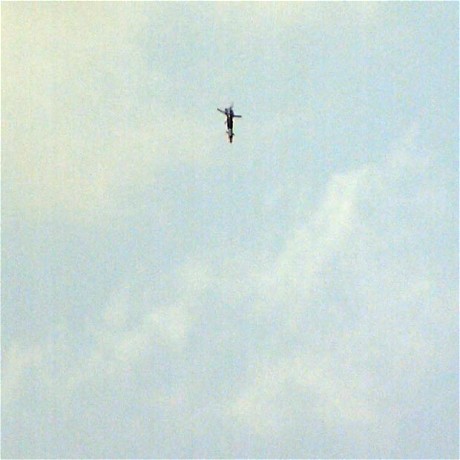
Live AIM-120 AMRAAM Missile Still Missing with Search Underway.
A Spanish Air Force Eurofighter Typhoon combat aircraft accidently fired an AIM-120 Advanced Medium Range Air-to-Air Missile (AMRAAM) while flying near Otepää in Estonia, less than 50 km west of the Russian border. The missile has not been recovered. The last assumed location of the missile is roughly 40 km to the north of the city of Tartu, and its direction was northbound. The incident took place on Tuesday, August 7, 2018 sometime around 3:45 PM local.
A search is currently underway for the wreckage of the missile. According to a statement by Estonian Defense Forces, the AIM-120 AMRAAM was equipped with an automatic destruct mechanism intended to destroy the missile if it were accidentally discharged, but officials could not confirm if the missile had been destroyed. They have issued an official hotline phone number in Estonia to call immediately if parts of the missile are found, and the public is cautioned not to touch or approach suspected missile debris. The phone number to report suspected missile fragments in Estonia is: +372 717 1900.

The Eurofighter Typhoon that accidentally fired the missile was based at Šiauliai, Lithuania, where it returned following the incident. Conflicting reports say the aircraft had either been participating in a training exercise or a QRA (quick reaction alert) drill: considered that alert aircraft carry live missiles, the latter seems more likely, even though aerial exercises in the context of enhanced air policing operations may involve armed aircraft.
The aircraft that accidentally discharged the missile was accompanied by another Spanish Typhoon and two French Mirage 2000 according to Estonia’s Ministry of Defense. This means the Eurofighter Typhoon C.16 was one of the six aircraft contingent from the Spanish military that assists with the NATO enhanced air policing mission in the region along with other aircraft. The air policing mission has received significant notoriety over the last years because of increased Russian air activity in the region, with the NATO air policing patrols frequently tasked with interception and escort of Russian aircraft.
Estonia’s Prime Minister Juri Ratas posted on Facebook that there were “No human casualties,” and characterized the incident as “extremely regrettable.”
He went on to say, “I am sure that the Estonian defense forces will, in cooperation with our allies, identify all the circumstances of the case and make every effort to make sure that nothing like this happens again.”
The incident calls into question the protocols associated with using live weapons in close proximity to civilian areas, and also raises concerns about the safety of the NATO air policing mission. What are the procedures for firing a live missile? How can a missile be fired by “accident”? Isn’t there a sort of Master Armament Switch that prevents arming the missiles?
This incident does appear to be unique however, with other accidental discharges of air-to-air missiles, especially in areas proximate to NATO patrol areas, being non-existent. In general, these patrol flights have historically exhibited a good safety record, free from accidental weapons releases.
H/T @juanmab for the heads-up!



